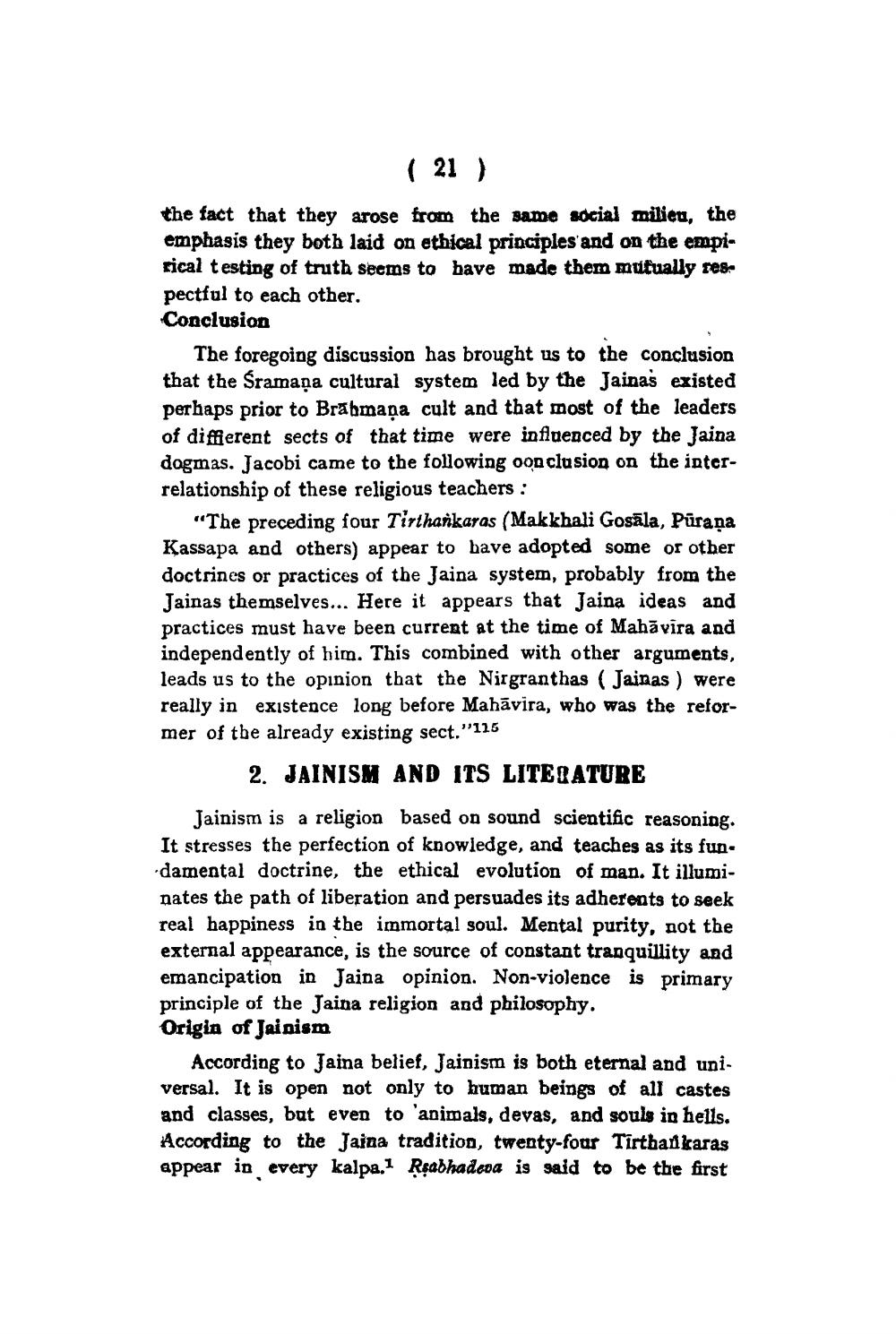________________
( 21 )
the fact that they arose from the same social milieu, the emphasis they both laid on ethical principles and on the empirical testing of truth seems to bave made them mutually respectful to each other. Conclusion
The foregoing discussion has brought us to the conclusion that the Sramana cultural system led by the Jainas existed perhaps prior to Brābmaņa cult and that most of the leaders of difierent sects of that time were influenced by the Jaina dogmas. Jacobi came to the following oon clusion on the interrelationship of these religious teachers :
"The preceding four Tirthankaras (Makkhali Gosāla, Purana Kassapa and others) appear to have adopted some or other doctrines or practices of the Jaina system, probably from the Jainas themselves... Here it appears that Jaina ideas and practices must have been current at the time of Mahāvira and independently of him. This combined with other arguments, leads us to the opinion that the Nirgranthas (Jainas ) were really in existence long before Mahāvira, who was the reformer of the already existing sect."115
2. JAINISM AND ITS LITERATURE
Jainism is a religion based on sound scientific reasoning. It stresses the perfection of knowledge, and teaches as its fun. damental doctrine, the ethical evolution of man. It illuminates the path of liberation and persuades its adherents to seek real happiness in the immortal soul. Mental purity, not the external appearance, is the source of constant tranquillity and emancipation in Jaina opinion. Non-violence is primary principle of the Jaina religion and philosophy. Origin of Jainism
According to Jaina belief, Jainism is both eternal and universal. It is open not only to human beings of all castes and classes, bat even to 'animals, devas, and souls in hells. According to the Jaina tradition, twenty-four Tirthari karas appear in every kalpa.1 Rşabhadeva is said to be the first




